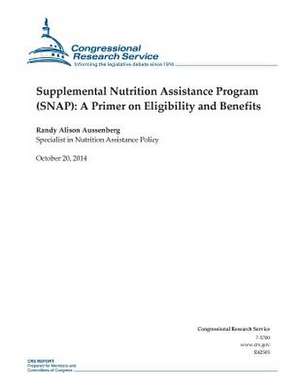Supplemental Nutrition Assistance Program (Snap)
Autor Congressional Research Serviceen Paperback
| Toate formatele și edițiile | Preț | Express |
|---|---|---|
| Paperback (2) | 122.20 lei 3-5 săpt. | |
| CREATESPACE – | 122.20 lei 3-5 săpt. | |
| CREATESPACE – | 122.43 lei 3-5 săpt. |
Preț: 122.20 lei
Nou
Puncte Express: 183
Preț estimativ în valută:
23.38€ • 25.48$ • 19.70£
23.38€ • 25.48$ • 19.70£
Carte disponibilă
Livrare economică 02-16 aprilie
Preluare comenzi: 021 569.72.76
Specificații
ISBN-13: 9781503005686
ISBN-10: 1503005682
Pagini: 26
Dimensiuni: 216 x 279 x 1 mm
Greutate: 0.09 kg
Editura: CREATESPACE
ISBN-10: 1503005682
Pagini: 26
Dimensiuni: 216 x 279 x 1 mm
Greutate: 0.09 kg
Editura: CREATESPACE
